2.03 - Assessing soil texture
Below is a brief explanation of the different soil texture classes. The descriptions of the classes and the explanation of terms are based on Southern Dryland SoilPak by Nathalie Brown (NSW Agriculture) and Tom Green (CSIRO), compiled for NSW Agriculture.
Following the explanation is a step-by-step outline and flowchart to help you to assess your soil texture.
Estimating soil texture (simplified texture classes)
Sand
- Coherence of the soil ball is nil to slight.
- Single sand grains stick to your fingers.
- Minimal ribbon development when extruded between fingers and thumb.
- Clay content less than 10%.
Sandy loam
- Soil ball coherent but very sandy.
- The sand in these soils cannot be seen with the naked eye but can be felt when rubbed between the fingers. A scratchy noise may be heard when the ball is manipulated between the fingers.
- Soil will form a ribbon 15–25mm long when rubbed between fingers and thumb.
- Clay content 10–20%.
Loam
- Soil ball coherent and often spongy. May have a ‘greasy’ feeling if significant organic matter is present.
- Soil will form a ribbon 25–40mm long.
- Clay content 25–30%.
Clay loam
- Soil ball strongly coherent and plastic. Feels smooth.
- Soil will form a ribbon 40–50mm long.
- Clay content 30–35%.
Light to medium clay
- Soil ball like plastic. Slight-to-moderate resistance to shearing between the forefinger and thumb.
- Soil will form a ribbon 50–75mm long.
- Clay content 35–45%.
Medium to heavy clay
- Smooth soil ball that handles like plasticine and can be moulded into rods without breaking.
- Soil has moderate-to-firm resistance to shearing.
- Soil can be rubbed between fingers and thumb to produce a ribbon 75mm long or more.
- Clay content greater than 45%.
Explanation of terms used
Coherence: The ball of soil holds together tightly.
Sandy: Feels gritty and you can see coarser grains. Very fine sand grains (too small to see and feels a bit like silt) make a grating sound as you rub between your fingers.
Spongy: High organic matter content creates a spongy feel that is typical of loams.
Silky: The smooth, soapy, slippery feel of silt.
Plastic: The ball can be deformed and it holds its new shape strongly. Typical of clays.
Resistance to shearing: How firm the soil feels as you form a ribbon (place the ball between your thumb and forefinger and squeeze, sliding your thumb across the soil). The firmness is a good way to distinguish light, medium and heavy clays. A light clay soil is easier to shear; a medium clay is stiff; a heavy clay is very stiff and it usually takes two hands to form a ribbon.
How to texture your soil
1. Take a sample of soil that has been crumbled and crushed, sufficient to fit comfortably in the palm of your hand.
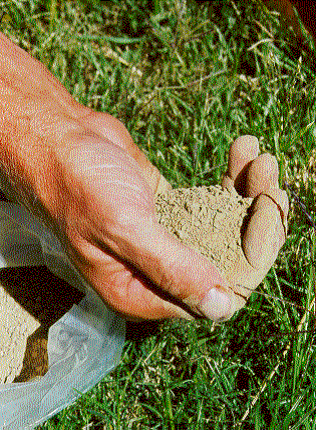
2. Moisten the soil with water, a little at a time. Knead the soil until it forms a ball 3.0–4.5cm in diameter, or about golf ball size. Knead it until the ball just fails to stick to your fingers, adding more water if needed. The ball of soil should not be saturated (water dripping out) or too dry (still a bit dusty, lumpy and hardly wet at all).
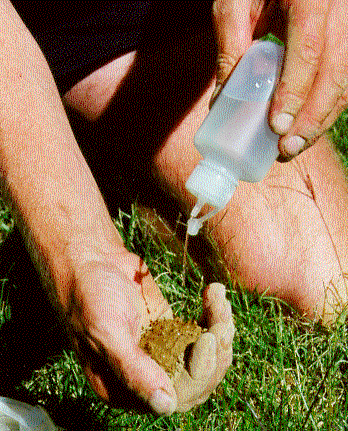
3. Continue kneading and moistening, if necessary, until there is no apparent change in the feel of the ball; this usually takes 1–2 minutes, but may take longer with clays.
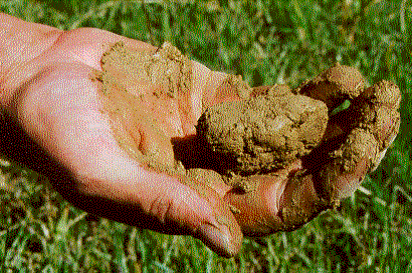
4. Assess the soil for coherence (the way the ball holds together) by squeezing the moist ball in your hand. Knead the ball for a further minute.
5. Assess the feel as you knead it. Rub the soil between the end of your thumb and forefinger to detect grains of sand.
6. Press the soil between your thumb and the side of your forefinger and squeeze it to make a thin, continuous ribbon about 2mm thick until it breaks of its own accord.
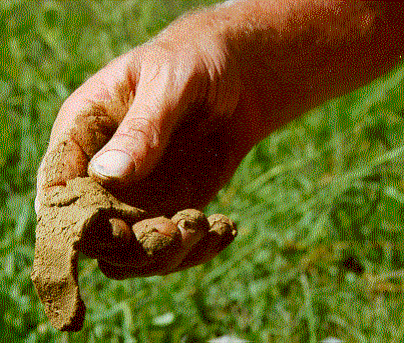
7. Measure the length of the ribbon. Repeat this ribboning test a few times to obtain an average length of the ribbon.
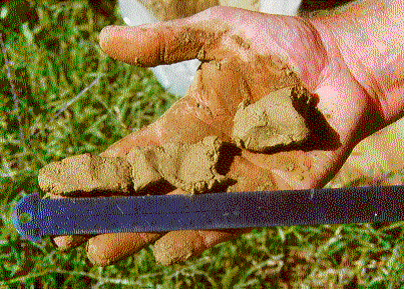
8. Try to roll it into a rod 8–10 mm thick. If it makes a long rod, see if the rod can form a ring without cracking.
The flowchart method
Follow the flowchart by manipulating the soil and answering each question 'yes' or 'no'.
Methodology for assessing soil texture
Does the soil form a coherent ball?
- Yes, Easily
- Yes, but only with great care
- No
Access flowchart as pdf here.
